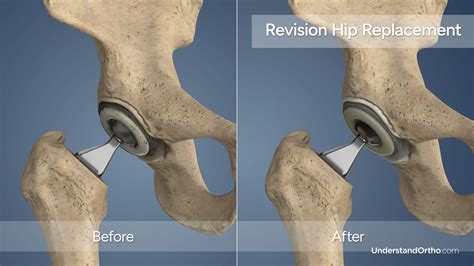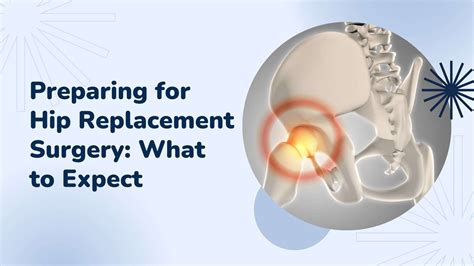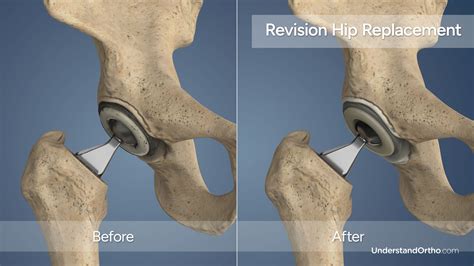Intro
Discover 5 essential tips for hip replacement surgery, including recovery, rehabilitation, and post-operative care, to ensure a smooth and successful orthopedic procedure, relieving hip pain and improving mobility.
Hip replacement surgery is a life-changing procedure for many individuals suffering from severe hip pain or mobility issues. With advancements in medical technology and surgical techniques, hip replacement has become a highly effective and safe procedure. However, it's essential to approach this surgery with a clear understanding of what to expect and how to prepare. In this article, we will delve into the world of hip replacement, exploring the benefits, risks, and tips for a successful recovery.
The importance of hip replacement cannot be overstated, as it has the potential to significantly improve the quality of life for individuals with hip-related issues. By replacing the damaged or arthritic hip joint with an artificial one, patients can experience a significant reduction in pain and a substantial improvement in mobility. As the population ages, the demand for hip replacement surgery is expected to increase, making it crucial to educate individuals about the procedure and its benefits.
As we navigate the complex world of hip replacement, it's essential to consider the various factors that contribute to a successful outcome. From the initial consultation to the post-operative recovery, each stage of the process plays a critical role in determining the overall success of the surgery. By understanding the intricacies of hip replacement and following the right tips, individuals can ensure a smooth and successful recovery.
Understanding Hip Replacement Surgery

The benefits of hip replacement surgery are numerous, including significant pain relief, improved mobility, and enhanced quality of life. By replacing the damaged hip joint, individuals can regain their independence and resume their normal activities without the burden of chronic pain. Additionally, hip replacement surgery can help to improve sleep quality, reduce fatigue, and increase overall physical function.
Types of Hip Replacement
There are several types of hip replacement procedures, each with its unique characteristics and benefits. The most common types include: * Total hip replacement: This involves replacing both the ball and socket of the hip joint with artificial components. * Partial hip replacement: This involves replacing only the ball of the hip joint with an artificial component. * Hip resurfacing: This involves replacing the damaged surface of the hip joint with a metal cap.Preparing for Hip Replacement Surgery

What to Expect During Surgery
During hip replacement surgery, the surgeon will make an incision in the hip area to access the damaged joint. The surgeon will then remove the damaged joint and replace it with an artificial one, securing it in place with screws or cement. The surgery typically takes several hours to complete, and patients are usually under general anesthesia or regional anesthesia.Recovery and Rehabilitation

Common Complications and Risks
As with any surgical procedure, hip replacement surgery carries some risks and complications, including: * Infection: Bacterial or viral infections can occur after surgery, requiring antibiotics or further surgery. * Blood clots: Blood clots can form in the legs or lungs, requiring anticoagulant medication or further treatment. * Dislocation: The new hip joint can dislocate, requiring further surgery or manipulation.5 Tips for a Successful Hip Replacement

Conclusion and Final Thoughts
In conclusion, hip replacement surgery is a highly effective procedure for individuals suffering from severe hip pain or mobility issues. By understanding the benefits, risks, and tips for a successful recovery, individuals can ensure a smooth and successful outcome. Remember to choose the right surgeon, prepare physically and mentally, follow post-operative instructions, attend follow-up appointments, and be patient and persistent. With the right approach and mindset, individuals can regain their independence and resume their normal activities without the burden of chronic pain.What is hip replacement surgery?
+Hip replacement surgery is a procedure that involves replacing the damaged or arthritic hip joint with an artificial one, typically made of metal, ceramic, or plastic components.
What are the benefits of hip replacement surgery?
+The benefits of hip replacement surgery include significant pain relief, improved mobility, and enhanced quality of life. By replacing the damaged hip joint, individuals can regain their independence and resume their normal activities without the burden of chronic pain.
What are the risks and complications of hip replacement surgery?
+As with any surgical procedure, hip replacement surgery carries some risks and complications, including infection, blood clots, and dislocation. However, these risks can be minimized by choosing the right surgeon, preparing physically and mentally, and following post-operative instructions carefully.
We hope this article has provided you with valuable insights and tips for a successful hip replacement. If you have any further questions or concerns, please don't hesitate to comment below. Share this article with friends and family who may be considering hip replacement surgery, and help them make informed decisions about their health. Remember to take the first step towards a pain-free life and consult with a qualified surgeon today!
